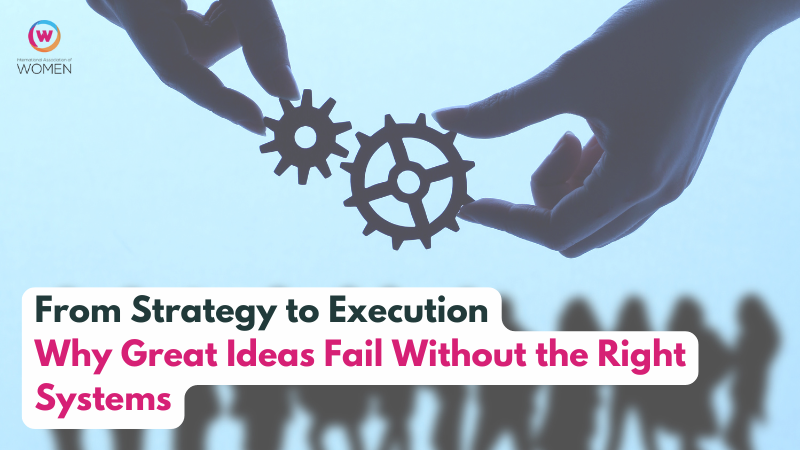A great idea can spark innovation, inspire teams, and drive growth—but without the right systems in place, even the most brilliant strategy will fall flat.
In today’s fast-paced, constantly shifting business environment, leaders often find themselves caught between vision and execution. They know what they want to achieve but struggle to align their teams, processes, and resources to make it happen. The result? Missed deadlines, wasted potential, and frustrated employees.
Laurie Waligurski, a management consultant, former Mastercard Senior Vice President, and IAW Influencer Member, has witnessed this challenge unfold across various industries. “Execution doesn’t fail because of a lack of ideas—it fails because systems aren’t designed to sustain them,” she explains.
With over 25 years of leading global operations, strategic programs, and product management initiatives, Laurie knows that successful organizations don’t just plan—they prepare.
1. Clarity Comes First: Align the Vision With the Work
Many organizations jump straight into action after setting ambitious goals. However, without clearly defining how success will be measured and who is responsible for each step, execution can quickly lose momentum.
Laurie emphasizes the importance of translating strategy into actionable frameworks. “The best leaders ensure every team member understands not only the destination but also their role in getting there,” she says. “That clarity builds accountability and eliminates confusion.”
2. Systems Should Empower, Not Overcomplicate
When systems are too rigid—or worse, inconsistent—they slow down progress. A well-designed system should provide structure while allowing flexibility for innovation and change.
Laurie draws from her Six Sigma and program management expertise to help clients streamline operations. “You need systems that make execution easier, not harder. The right tools and processes create rhythm, transparency, and trust across the organization.”
This might include standardized templates for project management, dashboards for tracking metrics, or playbooks that help teams replicate success. The goal, she explains, is not bureaucracy—it’s consistency.
3. Communication Is the Real Glue
Even the strongest strategies fail without strong communication. Leaders must establish a clear flow of information that keeps everyone aligned and engaged throughout the project lifecycle.
Laurie encourages leaders to integrate communication checkpoints into their systems. “Regular updates and feedback loops keep projects on track and people invested. When communication breaks down, execution breaks down,” she says.
4. Invest in Change Management, Not Just Project Management
One of the most common pitfalls in execution is underestimating the human side of change. Implementing new processes, technologies, or strategies requires buy-in, training, and time.
“Change management is where transformation either takes root or fades away,” Laurie notes. “Leaders who take the time to bring people along—explaining the ‘why’ behind the change—see higher engagement and faster adoption.”
5. Build Systems That Outlast You
Ultimately, effective execution means creating systems that don’t rely solely on one person or one department to succeed. Laurie’s consulting philosophy centers on empowering organizations to sustain their own growth.
“At LGW Executive Consultants, we don’t just deliver results—we teach clients how to replicate them,” she explains. “A good system doesn’t end with the project. It becomes part of the organization’s DNA.”
Turning Vision Into Reality
Ideas ignite progress, but systems sustain it. Whether you’re leading a corporate initiative, scaling a business, or reimagining operations, success depends on the infrastructure supporting your goals.
Laurie’s message is clear: Strategy sets direction—but execution demands design.
“Leaders who invest in strong systems don’t just achieve goals,” she says. “They build organizations that keep winning long after the strategy session ends.”
About Laurie Waligurski
Laurie Waligurski is a management consultant, former Senior Vice President at Mastercard, and President of LGW Executive Consultants. With expertise in strategic portfolio management, organizational optimization, and diversity leadership, she empowers organizations to break barriers, unlock potential, and transform bold visions into lasting impact.
👉 Learn more about Laurie’s work at www.lgwexecutiveconsultants.com.




